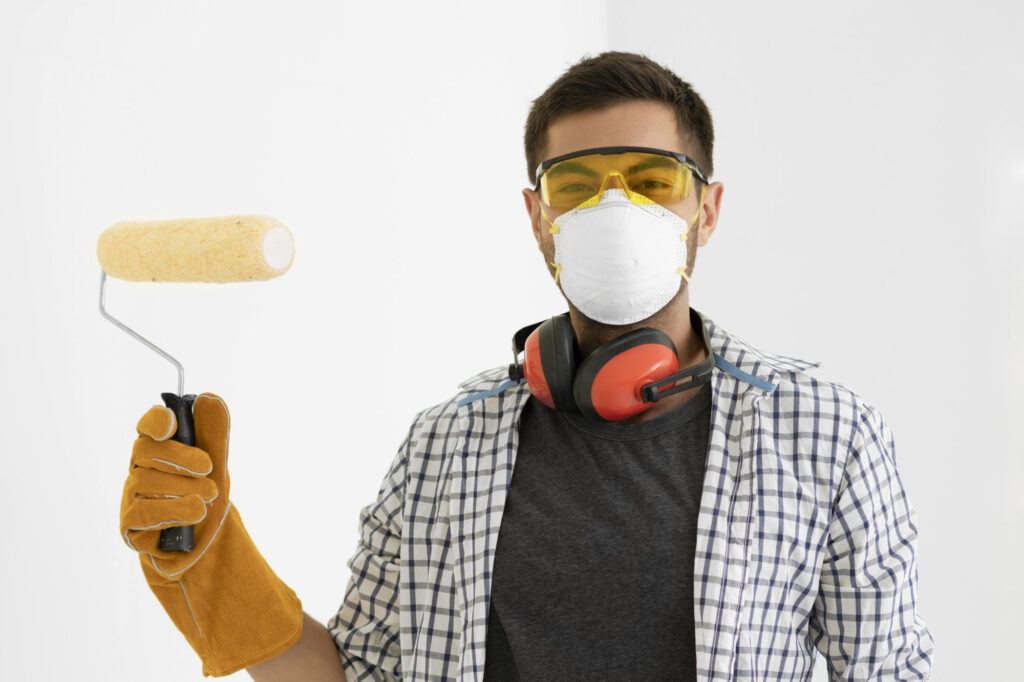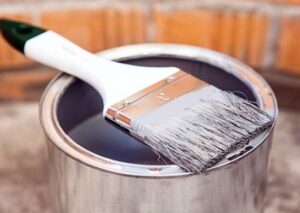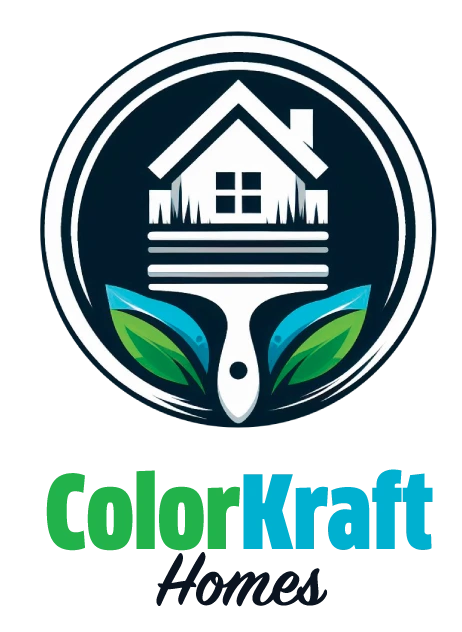When it comes to painting your home, safety should always be a top priority. From exposure to harmful chemicals and fumes to the risk of accidents, there are several hazards associated with painting. That’s where ColorKraft Homes comes in. ColorKraft Homes is a company dedicated to providing a hazard-free painting experience for homeowners. With their expertise and commitment to safety, you can trust that your painting project will be completed without any risks to your health or well-being.
Key Takeaways
- Understanding the hazards of painting is crucial to ensure a safe painting experience.
- Essential precautions such as wearing protective gear and preparing the workspace are necessary before painting.
- Proper ventilation is key to minimizing the risks of inhaling harmful chemicals while painting.
- Choosing the right painting materials can help prevent accidents and ensure a hazard-free experience.
- Safe painting techniques, such as avoiding overexertion and taking breaks, can further minimize risks.
Understanding the Hazards of Painting
Before diving into the precautions and safety measures, it’s important to understand the potential hazards of painting. One of the main hazards is exposure to harmful chemicals and fumes. Many paints contain volatile organic compounds (VOCs) that can be released into the air during the painting process. Prolonged exposure to these chemicals can lead to respiratory issues, headaches, and even more serious health problems.
Accidents are another common hazard associated with painting. Whether it’s falling off a ladder, tripping over paint cans, or getting injured by sharp tools, accidents can happen if proper precautions are not taken. It’s important to be aware of these risks and take the necessary steps to minimize them.
Essential Precautions to Take Before Painting
Before starting any painting project, there are several essential precautions that should be taken. First and foremost, it’s important to wear protective gear such as goggles, gloves, and a mask. This will help protect you from any potential chemical exposure or accidents.
Preparing the workspace is also crucial for a safe painting experience. Clear the area of any obstacles or tripping hazards, and cover furniture and floors with drop cloths or plastic sheets to prevent any damage from paint spills or splatters. It’s also a good idea to remove any valuables or delicate items from the room to avoid accidents.
Proper Ventilation for Safe Painting
| Metrics | Description |
|---|---|
| Airflow rate | The amount of air that needs to be circulated in the painting area per minute to ensure proper ventilation |
| Ventilation system efficiency | The percentage of harmful fumes and particles that are removed from the painting area by the ventilation system |
| Paint type | The type of paint being used, as some paints emit more harmful fumes than others |
| Painting area size | The size of the area being painted, as larger areas require more ventilation to ensure proper air circulation |
| Number of painters | The number of people painting in the area, as more people require more ventilation to ensure proper air circulation |
| Duration of painting | The length of time the painting will take, as longer painting sessions require more ventilation to ensure proper air circulation |
Proper ventilation is key to ensuring a safe painting experience. Good air circulation helps to minimize the concentration of harmful fumes and chemicals in the air. Before starting your painting project, open windows and doors to allow fresh air to flow into the room. If possible, use fans or exhaust systems to further improve air circulation.
It’s also important to avoid painting in confined spaces without proper ventilation. If you’re working in a small room or a bathroom, make sure to keep the door open and use fans to help circulate the air. If you’re painting in a basement or an area without windows, consider using a respirator mask to protect yourself from any potential fumes.
Choosing the Right Painting Materials for a Hazard-Free Experience
Choosing the right painting materials is essential for a hazard-free experience. Opt for paints that are low in VOCs or labeled as eco-friendly. These paints are formulated with fewer harmful chemicals, making them safer for both you and the environment.
When it comes to brushes and rollers, look for ones made from natural or synthetic fibers that are free from harmful chemicals. Avoid using brushes or rollers that have been previously used with toxic paints, as they may still contain traces of those chemicals.
ColorKraft Homes recommends several brands and products that meet their safety standards. These include environmentally friendly paints such as Sherwin-Williams Harmony, Benjamin Moore Natura, and Behr Premium Plus.
Protecting Yourself from Harmful Chemicals While Painting

While choosing safe painting materials is important, it’s also crucial to protect yourself from harmful chemicals during the painting process. One of the simplest ways to do this is by wearing gloves. Gloves not only protect your hands from paint splatters but also create a barrier between your skin and any potentially harmful chemicals.
In addition to gloves, it’s important to avoid skin contact with paint as much as possible. If you do get paint on your skin, wash it off immediately with soap and water. If you’re using oil-based paints, consider using a barrier cream or lotion to create an extra layer of protection.
It’s also important to be mindful of the fumes while painting. If you start to feel lightheaded or dizzy, take a break and step outside for some fresh air. If you’re working in a poorly ventilated area, consider wearing a respirator mask to filter out any harmful fumes.
Safe Painting Techniques to Minimize Risks
Using safe painting techniques is essential for minimizing the risk of accidents. One of the most important things to remember is to use a ladder safely. Make sure the ladder is stable and secure before climbing up, and always maintain three points of contact (two feet and one hand or two hands and one foot) while on the ladder.
Avoid overreaching while painting, as this can lead to loss of balance and potential falls. Instead, reposition the ladder or use an extension pole to reach high areas. It’s also important to take breaks and rest your muscles to avoid fatigue, which can increase the risk of accidents.
How to Dispose of Paint and Painting Supplies Safely
Prop er disposal of paint and painting supplies is crucial for both safety and environmental reasons. Never pour paint down the drain or throw it in the trash, as it can contaminate water sources and harm the environment. Instead, check with your local recycling center or hazardous waste facility for proper disposal methods.
er disposal of paint and painting supplies is crucial for both safety and environmental reasons. Never pour paint down the drain or throw it in the trash, as it can contaminate water sources and harm the environment. Instead, check with your local recycling center or hazardous waste facility for proper disposal methods.
Empty paint cans can be recycled if they are completely dry. To dry out leftover paint, mix it with cat litter or sawdust until it becomes solid, then dispose of it in the trash. Brushes and rollers can be cleaned with water or a mild detergent before being reused or disposed of according to local regulations.
First Aid Tips for Common Painting Accidents
Despite taking all the necessary precautions, accidents can still happen. It’s important to be prepared and know how to handle common painting accidents. If you experience skin irritation from paint, wash the affected area with soap and water and apply a soothing lotion or cream. For eye injuries, flush the eyes with clean water for at least 15 minutes and seek medical attention if necessary.
In the case of a paint spill or splatter on clothing, remove the garment immediately and rinse it with water. If the paint has dried, try using a stain remover or rubbing alcohol to loosen it before washing. For more serious accidents, such as falls or cuts, seek medical attention right away.
Enjoying a Safe Painting Experience with ColorKraft Homes
 In conclusion, painting your home can be a fun and rewarding experience, but it’s important to prioritize safety. ColorKraft Homes understands the hazards associated with painting and is committed to providing a safe and enjoyable painting experience for homeowners.
In conclusion, painting your home can be a fun and rewarding experience, but it’s important to prioritize safety. ColorKraft Homes understands the hazards associated with painting and is committed to providing a safe and enjoyable painting experience for homeowners.
By following essential precautions, choosing safe painting materials, protecting yourself from harmful chemicals, using safe painting techniques, and properly disposing of paint and supplies, you can ensure a hazard-free painting project. Remember to always prioritize your safety and well-being when embarking on any home improvement project. With ColorKraft Homes, you can have peace of mind knowing that your painting project will be completed safely and to your satisfaction.
If you’re planning to tackle a painting project, it’s important to prioritize safety precautions. From wearing protective gear to ensuring proper ventilation, there are several measures you can take to protect yourself and others. To learn more about painting safety, check out this informative article on Painter Near Me. Whether you’re looking for exterior painters in Orange County or house painters in Laguna Woods, it’s crucial to be aware of the necessary precautions. Don’t hesitate to reach out to their team for any further questions or concerns.
Other cities we serve:
Anaheim Home Painter Near Me | Costa Mesa Home Painter Near Me | Fullerton Home Painter Near Me | Huntington Beach Home Painter Near Me | Laguna Hills Home Painter Near Me | Mission Viejo Home Painter Near Me
FAQs

What are painting safety precautions?
Painting safety precautions are measures taken to ensure the safety of individuals while painting. These measures include the use of personal protective equipment, proper ventilation, and safe handling of painting materials.
What personal protective equipment should be worn while painting?
Personal protective equipment that should be worn while painting includes gloves, safety glasses, and a respirator mask. These items protect the skin, eyes, and lungs from harmful chemicals and fumes.
Why is proper ventilation important while painting?
Proper ventilation is important while painting because it helps to remove harmful fumes and chemicals from the air. Without proper ventilation, individuals may inhale these substances, which can cause respiratory problems and other health issues.
What are some safe handling practices for painting materials?
Safe handling practices for painting materials include keeping them away from heat sources, storing them in a cool, dry place, and disposing of them properly. It is also important to read and follow the manufacturer’s instructions for use.
What should be done in case of a paint-related injury?
In case of a paint-related injury, seek medical attention immediately. If the injury is due to inhalation of fumes, move to an area with fresh air. If the injury is due to contact with the skin or eyes, rinse the affected area with water for at least 15 minutes.
Page Design by: House Painting Near Me


